FACES OF THE ECONOMY: Hani Asfour
Faces of Economy – Lebanon
FACES OF THE ECONOMY: Hani Asfour
There are 1.4 million workers in Lebanon – this is the story of one of them.
48-year-old Hani Asfour, architect, cofounded Polypod design studio in Hamra in 2006, after returning to Lebanon from a nearly 20 year absence.
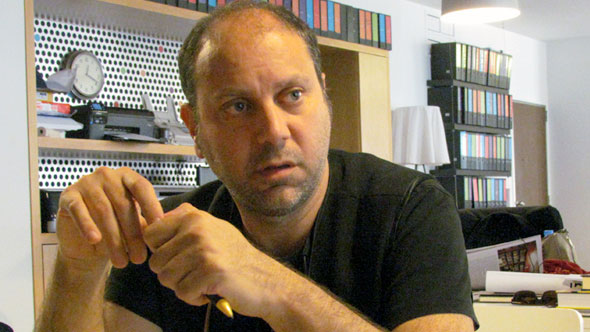
FACES OF THE ECONOMY: Hani Asfour
48-year-old Hani Asfour, architect, cofounded Polypod design studio in Hamra in 2006, after returning to Lebanon from a nearly 20 year absence. Asfour is currently serving as the president of the Beirut Creative Cluster, an initiative of Berytech, a business incubator, to bring together Lebanon’s leaders in the creative industry.
There are 1.4 million workers in Lebanon – this is the story of one of them.
By T.K. Maloy
BEIRUT – During the war, as a teenager, Hani Asfour’s family house was bombed and wrecked.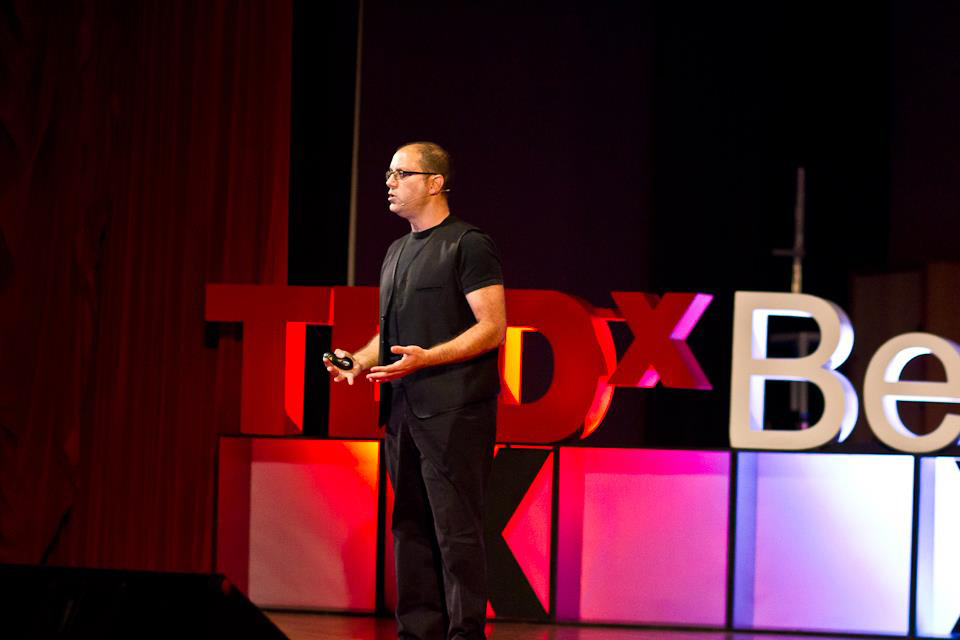
Leaving Lebanon
“I left Beirut on my nineteenth birthday, during what is known as the events of February 1984, thinking I would be gone for two weeks until things subside. I stayed in the US for almost twenty years.”
“We settled in Boston because I have family there. We had left Beirut suddenly; I had no material or transcripts with me. I borrowed my Aunt’s copy of the school yearbook I had sent her the summer before, a book which I art directed and designed, as editor-in-chief leading a team of dedicated students (we are still friends), and showed it to the admissions committee,” Asfour said.
“I got in, and that taught me a lesson for life – that design can matter,” the architect told a rapt audience at one of the famous TEDXBeirut talks.
Speaking to Marcopolis, Asfour recounted, “MIT was an emotional time of growth, as I had left my girlfriend Rula — now my wife — back home. So it was tough, especially in pre-Internet time, with all phone systems barely working in Lebanon. Plus the culture shock of the US, combined with the pressure at MIT and the way Lebanese are portrayed in the US media, the challenge of fitting in was hard.”
By his junior year he opted for time off from academia “and worked at an architectural firm in Boston run by one of my professors, as a way of coping.”
“I got in, and that taught me a lesson for life – that design can matter,” the architect told a rapt audience at one of the famous TEDXBeirut talks.
But the growing designer returned to the challenge of MIT. “At the end of my four years at MIT, I had evolved as a designer and architectural student, to the point where I was the first undergraduate to receive the Chamberlain Award for excellence in design, a prestigious award by the Boston Society of Architects, until then reserved for graduate students.”
Early Career
After his graduation, he went to work in Italy with one on of his former professors, followed by a stint of design freelance in Dubai – marriage to Rula – and then following the wedding the young couple drove across America from Boston to Los Angeles where Hani worked designing home in Manhattan Beach for a small firm in Southern California
“During this period, I got accepted at Harvard University to pursue my masters in architecture. We returned to Cambridge in 1991, and I graduated in 1994 with distinction, a day after our first daughter Nadia was born.”
“In terms of education, I feel that Harvard shaped me more as an architect than MIT, although MIT’s tremendous foundation is something I cherish to this day,” the architect told Marcopolis.
Asfour wasn’t to return to Lebanon yet as following Harvard he worked at Machado and Silvetti in Boston.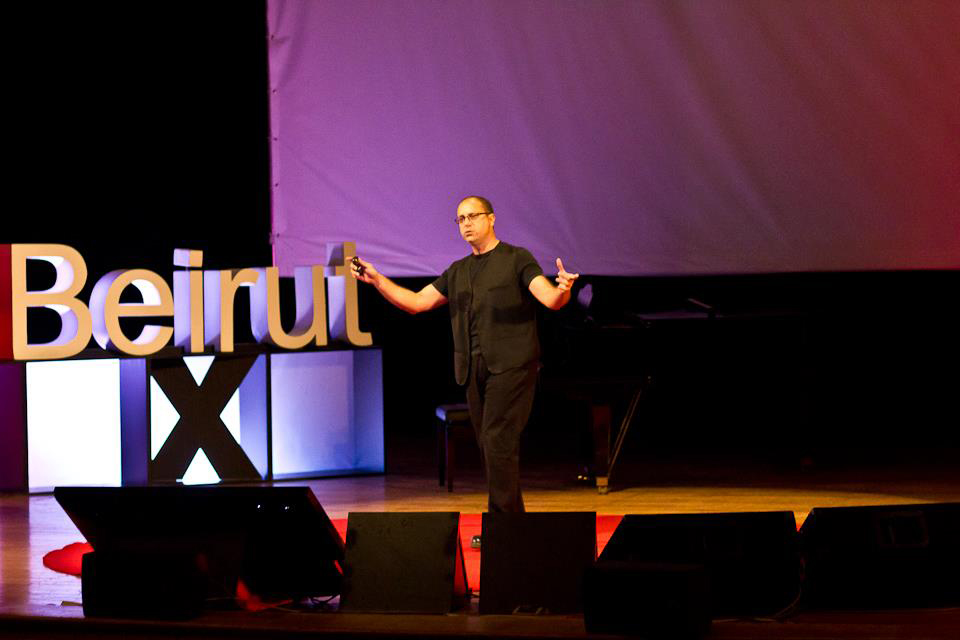
“Silvetti was my thesis advisor at Harvard, and it was a natural extension of my educational background, but the pay was dismal, and planning a family became prohibitive.” He said. “In 1996 I joined the firm of the Office of Peter Rose, another Harvard professor, renowned for designing the Canadian Center for Architecture.”
A person of many parts, Hani Asfour was to take a creative detour from architecture for several years for a sojourn in the digital world that eventually also included his well-honed talents as an architect.
“Following the birth of Maia, our second child, AOL, the company where my wife (Rula) was working as a programmer, decided to close down their Boston office. They gave us the choice to relocate, and during this period I was able to see how the IT business was growing and how well they treated their employees,” he recounted.
“By the end of 1997 I had taught myself the nascent basics of the Web, including HTML, basic JavaScript, and a little Flash, and by 1998 had joined a Boston-based startup called Viant as a lead creative, working as a Web designer and in digital branding.”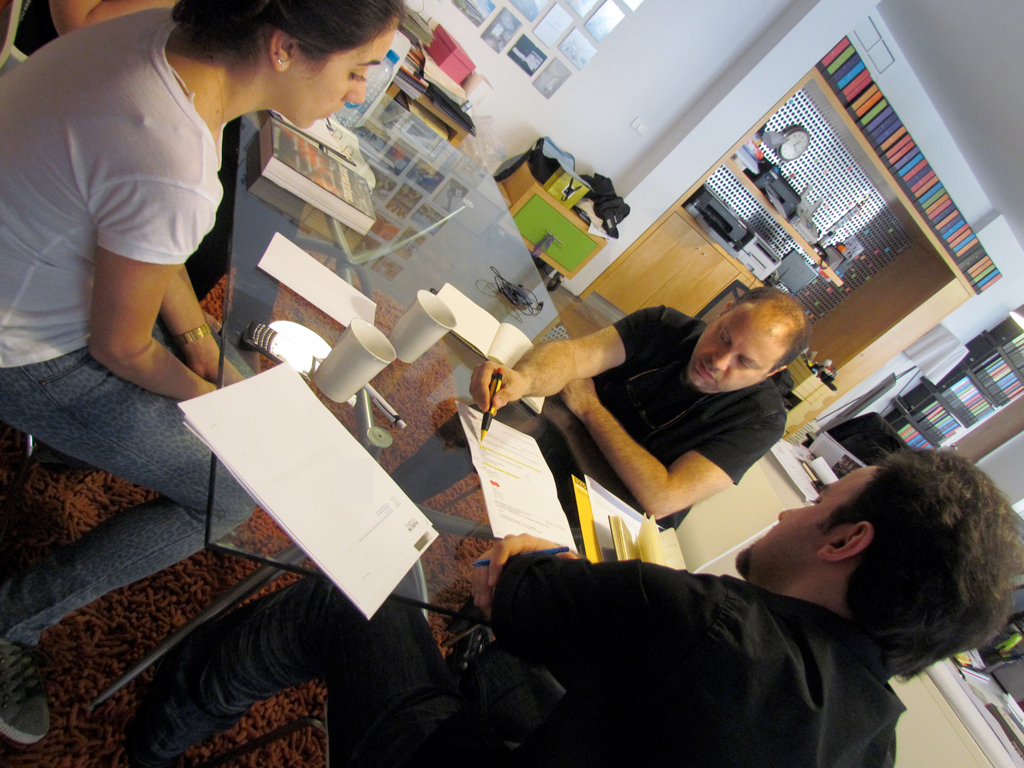
He added, “I spent four years at Viant, and eventually led the effort to design our new workplaces, in Los Angeles, Dallas, Houston, and Boston, as the company was rapidly growing.”
World events and personal considerations finally led Hani Asfour back to his homeland in 2004.
Returning Home
“With the dotcom bust, 911, the Iraq war; the collapse of the economy in the US; and the birth of our son Raja, we considered leaving the US for a short while, and AUB had a visiting professor opening in architecture, to which I applied,” he said “By that time, I had a combined experience in architecture, and from my years at Viant, in interior design and branding. Following two years teaching architecture at AUB, work started trickling in, enough to start a company.”
Polypod was created “unofficialy” in 2006, “working collaboratively with various architects and designers, and in 2008, with my business partner, architect Rana Samara Jubayli, we officially registered the company.”
For the American-schooled architect returning home, the founding of the company was to prove a successful decision and as part of his management philosophy Polypod has maintained a very egalitarian organization.
Polypod is a multidisciplinary design firm (specializing in architecture, interior design, graphic and Web design, and branding), the name literally means “many legged”, or, multiple teams, “as one can perceive the pod as a cluster of designers. The logo shape is the merger of two circles, or pods,” the company co-founder explained.
“Our growth has been organic ever since, allowing each project to take us to new grounds. We work hard at building an empowered base of staff members, and we encourage open dialog and literal transparency. “Asfour said. “People at Polypod are expected to be themselves, and not bring in a work persona, so to speak. In order to do that we conduct workshops, team norming exercises, outings, and other events to foster trust among the staff. In the process, we have produced many projects.”
He is quick to add, however, that the word “management: is an oxymoron “in the creative business.”
Polypod is a multidisciplinary design firm (specializing in architecture, interior design, graphic and Web design, and branding), the name literally means “many legged”, or, multiple teams, “as one can perceive the pod as a cluster of designers. The logo shape is the merger of two circles, or pods,” the company cofounder explained.
The company has grown to 12 designers and has won a number of international design awards, including: three “Graphis Gold Medals” (one in 2008 and two in 2012), the “ReBrand100 Distinction Award” (2009) and the “IPA Highly Commended Architecture Multiple Residence in Lebanon”(2012). In 2010, Polypod launched the Creative Series, a platform to host and network creative minds in our community.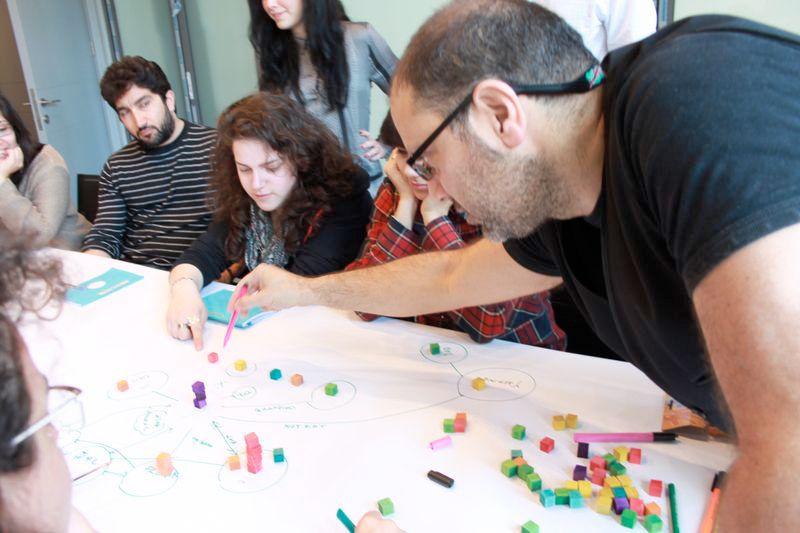
Talking about several recent projects, the Polypod principal said “We have received much recognition for two projects in particular, The One-Ain Saadeh (architecture), and Visualizing Palestine (graphic design). The One-Ain Saadeh project recently won the previously mentioned multiple residence award prestigious International “Properties Award, Arabia,” along with the “Highly Commended Development Multiple Units Lebanon.” The project comprises the masterplan and design of thirty suburban villas on a steep wooded area in Ain Saadeh.”
Personal Life
Personal details: Hani is vegan and drives a 2013 red Smart ForTwo. He is a short distance commuter most often, noted that ” we rented a furnished apartment to use on weekdays, in Caracas, near Polypod, the children’s schools, LAU where I teach and my wife currently works.”
Hani and Rula have three children: Nadia, 18, who is studying fine arts at LAU. Maia, 15, who is in 10th grade; and Raja, 10, who is in 4th grade.
Regarding the family budget, he noted, “Of course, I do hold off spending, tightly, and whenever there is some room, we spend it on our children’s education and growth. We try to not let the children feel the pinch.”
When he commutes from his mountain house in Mtayleb – it is about 17km each way — Asfour estimates that he spends less than LL30,000 per week, noting my “car is able to do 300km/20L.”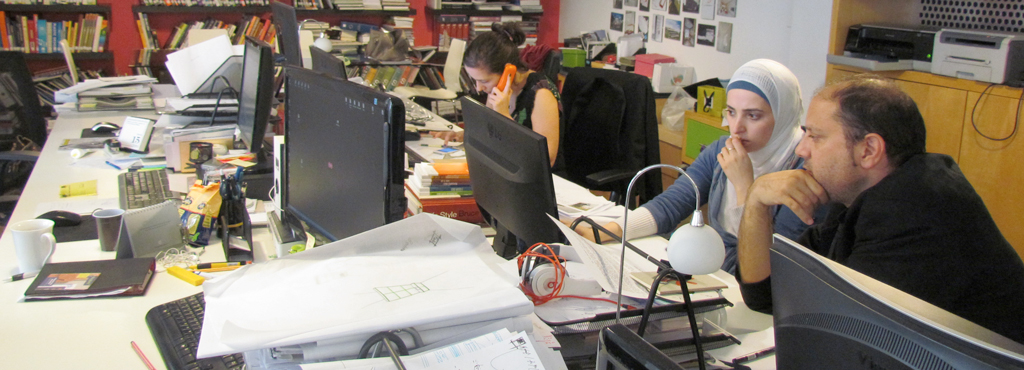
“Traffic in Beirut is a monster that we will not be able to tame with the prevailing national mindset,” he said. “What is redeeming, is that once out of traffic, any destination in Lebanon is so rich and satisfying (whether culturally, family-wise, friends, naturally, or work-wise), that one tends to forget the ordeal getting there.”
On the question of favorite part of the multi-faceted city of Beirut, the architect said without hesitation “Hamra is my favorite part of Beirut since I grew up there, and in the twenty year hiatus, I craved returning there. Salma Abdelnour captures that sentiment rather well in her recent book, “Jasmine and Fire.”
” So far, most of my wishes have come true, of their own accord, as corny as that sounds, Hani Asfour noted of his work and life thus far. “I feel blessed!”
Asfour is currently serving as the president of the Beirut Creative Cluster, an initiative of Berytech, a business incubator, to bring together Lebanon’s leaders in the creative industry.
EDITOR’S NOTE: Every two weeks Marcopolis will profile a different hardworking citizen. Nominations can be sent by you, friends, family or even coworkers, for inclusion in the “Face” series. Tell us your story. Send to contributing business correspondent: T.K. Maloy: tkmaloy@gmail.com